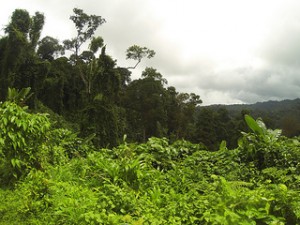Larry Payne was a sixteen year old black boy who lived in Memphis, Tennessee. In March 28, 1968,

Striking Sanitation Workers and their Supporters surrounded by National Guard. March 29, 1968.
Payne was marching in the streets of Memphis in a protest led by Dr. Martin Luther King Jr. in support of sanitation workers who were part of an ongoing strike, as they were asking for their environmental and economic rights. After clashes with the police broke, Payne was shot dead by a Memphis police officer. The Second National People of Color Summit cited this series of strikes by sanitation workers as an important milestone in the history of the Environmental justice movement. Around 1970, over ten years before the term “environmental racism” was first officially used, the United States Public Health Services acknowledged that lead poisoning was more common among Black and Hispanic children than among white children. A year later, 1971, the President’s Council on Environmental Quality (CEQ) issued its annual report which acknowledged discrimination against the poor and how that impacts the quality of their environment. In 1979, Linda McKeever Bullard filed a lawsuit against Southwestern Waste Management, Inc. which was seeking to build a solid waste management facility in Northeast Huston siting that the decision to build this facility is racially discriminating, since the neighborhood targeted is a predominantly black neighborhood. These events as well as many others made the general public more aware of a pattern showing that poor communities and communities of color are targeted locations for building polluting industrial facilities and siting dumping toxic waste. More importantly, these events have made more and more people of color conscious of the injustices and discrimination committed against them. The Protests against a PCB landfill in Warren County, North Carolina in 1982 were one of the major milestones for the Environmental Justice movement, and it was then that Dr. Benjamin Chavis, civil rights activists and leader, coined the term “environmental racism.” In his book, Confronting Environmental Racism: Voices from the Grassroots, Dr. Robert Bullard, environmental justice researcher and activist, defines the term as: “Racial discrimination in environmental policy making. … enforcement of regulations and laws. …deliberate targeting of communities of color for toxic waste disposal and the siting of polluting industries… racial discrimination in the official sanctioning
of the life-threatening presence of poisons and pollutants in communities of color. And, it is racial discrimination in the history of excluding people of color from the mainstream environmental groups, decisionmaking [sec] boards, commissions and regulatory bodies.”
Continue reading →




